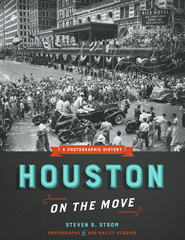
A favorite destination of visitors to the Texas coast, Corpus Christi is a midsize city that manages to be both cosmopolitan and provincial, networked and local. It is an indispensable provider of urban services to South Texas, as well as a port of international significance. Its industries and military bases and, increasingly, its coastal research institutes give it a range of connections throughout North America. Despite these advantages, however, Corpus Christi has never made it into the first rank of Texas cities, and a keen self-consciousness about the city’s subordinate position has driven debates over Corpus’s identity and prospects for decades.
In this masterful urban history—a study that will reshape the way that Texans look at all their cities—Alan Lessoff analyzes Corpus Christi’s place within Texas, the American Southwest, the western Gulf of Mexico, and the U.S.-Mexican borderlands from the city’s founding in 1839 to the present. He portrays Corpus as a place where westward Anglo expansion overwhelmed the Hispanic settlement process from the south, leaving a legacy of conflicting historical narratives that colors the city’s character even now. Lessoff also explores how competing visions of the city’s identity and possibilities have played out in arenas ranging from artwork in public places to schemes to embellish, redevelop, or preserve the downtown waterfront and North Padre Island. With a deep understanding of the geographic, historical, economic, and political factors that have formed the city, Lessoff demonstrates that Corpus Christi exemplifies the tensions between regional and cosmopolitan influences that have shaped cities across the Southwest.
Lessoff’s call to recognize the rise of urban Texas is valuable and rewarding for both historians and local residents.
This book is a model for other historians to test in other places—in Texas, the Southwest, and other regions. It is a great urban history and an excellent source for readers both familiar with and new to the city’s history.
An important contribution to the growing body of work on Sunbelt cities. . . . [It] proves that the history of successes, anxieties, and new starts in ‘peripheral’ cities might be just as important, if not more so, than the urban monoliths of history and historiography such as New York and Chicago.
A well-researched and interesting addition to urban history in an understudied region. The author incorporates environmental history nicely and demonstrates why Corpus Christi has not been able to achieve long-term success like many of its neighboring cities.
1. A City over Space and across Time
2. A Texas Seaport in Texas Lore
3. City on a Frontier of Peoples
4. Public Sculpture and Civic Identity
5. A Matter of Little Import
6. A Dynamic and Progressive City
Conclusion
Acknowledgments
Notes
Index













